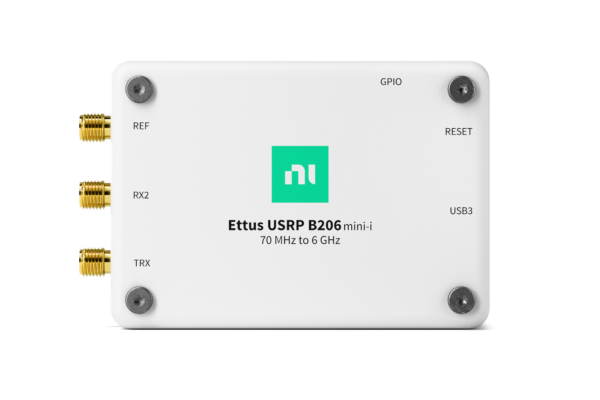Software-Defined Radio (SDR) has transformed how engineers, researchers, and educators interact with the radio frequency (RF) spectrum. By offering a flexible, programmable platform, SDRs enable rapid prototyping, experimentation, and deployment of wireless systems. The USRP B206mini-i , available through Digilent, is a compact yet powerful SDR designed to support advanced customization and real-world applications.

Why Program Your SDR?
Software is key to unlocking the full potential of SDR platforms like the USRP B206mini-i. Whether you’re teaching wireless communications, conducting research, or building embedded systems, software allows you to:
- Tailor Functionality: Adapt the SDR to specific use cases such as spectrum monitoring, cognitive radio, or IoT networks.
- Optimize Performance: Fine-tune parameters for demanding RF environments.
- Explore Advanced Techniques: Implement novel signal processing algorithms, machine learning models, or proprietary protocols.
Inside the USRP B206mini-i
To program effectively, it’s important to understand the architecture of the B206mini-i:
- RF Front-End: Powered by the Analog Devices AD9364 RFIC, it supports a wide frequency range from 70 MHz to 6 GHz with 56 MHz of instantaneous bandwidth.
- FPGA: The industrial-grade AMD Spartan-6 XC6SLX150 FPGA enables real-time signal processing and protocol implementation.
- Host Processor Interface: USB 3.0 Type-C connectivity ensures high-speed data streaming to your host computer.

For full specs, see the NI datasheet.
Programing with GNU Radio
GNU Radio provides a powerful software layer for SDR development. With the B206mini-i, you can:
- Create Flowgraphs: Use the graphical interface (GRC) to build signal chains without writing low-level code.
- Develop Custom Blocks: Extend functionality with Python or C++ modules.
- Integrate with UHD: Combine software flexibility with hardware acceleration via the USRP Hardware Driver (UHD).
For setup guides, see GNU Radio installation instructions.
Advanced Programing Techniques
Take your SDR projects further with these advanced strategies:
- External Hardware Integration: Use GPIO and JTAG connectors to interface with sensors, actuators, or embedded systems.
- Machine Learning Applications: Apply ML models for spectrum classification, anomaly detection, or adaptive filtering.
- Cloud-Based SDR: Deploy SDR applications on remote servers for scalable, collaborative research.
Programing the FPGA
The FPGA is the lowest level of hardware-level customization. With HDL languages like Verilog or VHDL, you can:
- Accelerate Signal Processing: Offload tasks like filtering, modulation, and FFT from the host.
- Implement Custom Protocols: Design communication stacks for niche applications.
- Build Real-Time Pipelines: Enable deterministic processing for time-sensitive systems.
Explore Ettus’s FPGA manual for build instructions and architecture details.
Why the USRP B206mini-i Stands Out
- Compact Form Factor: Credit card-sized, ideal for embedded and portable applications.
- Industrial Temperature Support: With enclosure, operates from -40°C to +75°C.
- Cross-Platform Compatibility: UHD supports Linux, Windows, and macOS, with APIs for C++, Python, MATLAB, and LabVIEW.
- Open-Source Ecosystem: Seamless integration with GNU Radio and other community tools.
Get Started Today
Ready to explore the possibilities of SDR?
- Visit the Digilent Reference Center for documentation and tutorials.
Whether you’re an educator, researcher, or developer, the USRP B206mini-i offers a powerful, customizable platform to bring your wireless ideas to life.

